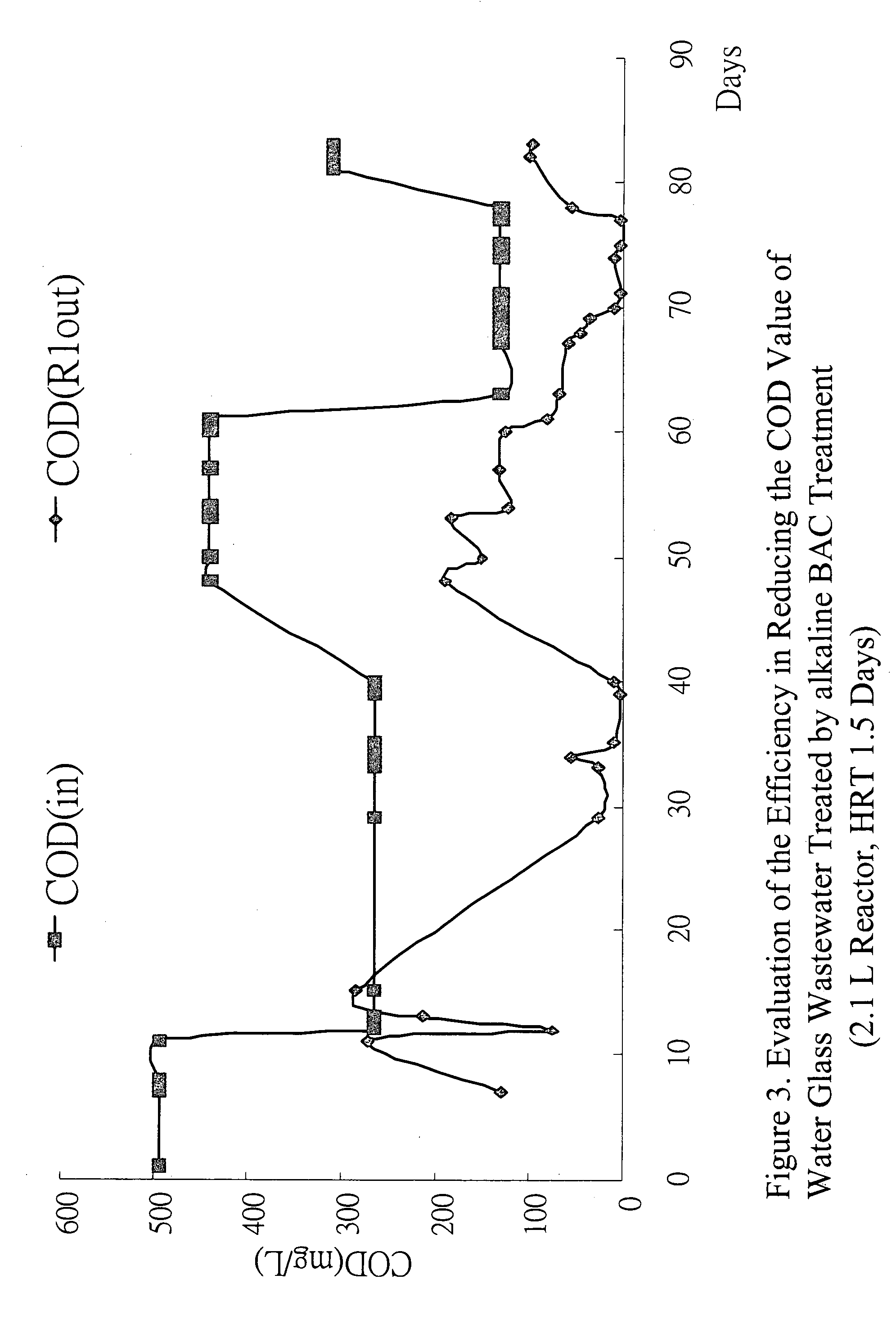Zero-discharge of water glass effluents by alkaline biotreatment techniques
a biotreatment and water glass technology, applied in biological water/sewage treatment, sustainable biological treatment, multi-stage water/sewage treatment, etc., can solve the problems of reducing the efficiency of activated sludge and chemical treatment on-site, and low efficiency of such wastewater processing
- Summary
- Abstract
- Description
- Claims
- Application Information
AI Technical Summary
Benefits of technology
Problems solved by technology
Method used
Image
Examples
Embodiment Construction
[0026] For the woven fabric textile dye factories, there are the continuous dyeing services (A-plant) and immersion dyeing services (B-plant). Main products include pure cotton 19.8%, T / C 22%, PET (containing Nylon) 42% and Tencel 14.2% etc. Using calculations based on product type distribution, the one time color agreement rate of 95% and average water usage, per product unit, of 65.about.70 L / kg are reasonable outcomes.
[0027] The current on-site wastewater treatments employ deep activated sludge system and chemical coagulation system. On-site wastewater is divided into two separate plants for independent deep activated sludge treatments, referring to FIG. 1:
[0028] A-plant--high concentration effluents from desizing, mercerizing and steam treating (containing water glass) process, B-plant--low COD concentration effluents from dyeing wastewater and fixing wastewater. The biotreated wastewater effluents mix together for further chemical treatment. The treated wastewater effluents has...
PUM
 Login to View More
Login to View More Abstract
Description
Claims
Application Information
 Login to View More
Login to View More - R&D
- Intellectual Property
- Life Sciences
- Materials
- Tech Scout
- Unparalleled Data Quality
- Higher Quality Content
- 60% Fewer Hallucinations
Browse by: Latest US Patents, China's latest patents, Technical Efficacy Thesaurus, Application Domain, Technology Topic, Popular Technical Reports.
© 2025 PatSnap. All rights reserved.Legal|Privacy policy|Modern Slavery Act Transparency Statement|Sitemap|About US| Contact US: help@patsnap.com



